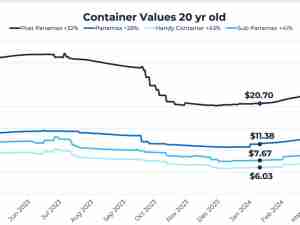Europe Goes to Ends of the Earth in Search of Sugar Markets
By: Agnieszka de Sousa | Nov 08 2017 at 03:57 AM | Maritime
European sugar is turning up in odd places.
Production from the region’s beet farms is drawing buyers as far away as Haiti, once a major grower of cane in the Caribbean, and Sierra Leone in sub-Saharan Africa. It’s even shown up on the Pacific island of Pitcairn, one of the remotest abodes on Earth.
Any demand is good news for producers such as Suedzucker AG, the world’s biggest, and main European rival Nordzucker AG as a supply glut has pushed white-sugar prices down 27 percent this year in London. That followed a European Union decision to end quotas on output and exports.
“There is a vibrant market out there that loves to take European white sugar right now,” Nordzucker Chief Executive Officer Hartwig Fuchs said in an interview at the company’s headquarters in Braunschweig, Germany. “We are the cheapest supply today.”
The EU’s share of global exports will more than double to almost 5 percent this season, according to the International Sugar Organization, a group that counts producing countries among its members. While Europe will want to maintain its traditional markets like Israel, Egypt, Norway and Switzerland, deliveries have also been booked to Cameroon and Mauritania in northwest Africa in recent weeks.
Fuchs highlighted an odder delivery to Pitcairn a year ago, only known to Nordzucker after a traveler from Braunschweig sent it a snapshot of its 25-kilogram sacks dropped off by a passing cruise liner. The volcanic outcrop is home to 50 or so mostly descendants of 18th Century mutineers from the ship HMS Bounty and about 10,000 miles from Europe as the crow flies, double the distance from Brazil, the world’s top sugar exporter.
More significant are sales of sugar produced by German competitor Suedzucker to Haiti, once one of the world’s main producers and just a few hundred miles from growers in Jamaica and Belize.
“We have a lot of demand right now indeed from outside Europe, because we are the cheapest,” Fuchs said, with stronger growth seen in Asia and Africa.
New markets abroad can’t compensate for the depressed prices European producers face amid a global glut. For now, exports have been a trickle relative to the expected oversupply, with Marex Spectron Group Ltd. saying slow loading at some ports may be to blame.
A weaker dollar against the euro has also reduced profit for European sugar growers, adding to pressure that may force the weakest out of business, according to Fuchs. Farmers will likely reduce planting, “drastically” cutting acreage as early as 2019, he said.
Imports into the EU have already been capped by lower regional prices. White-sugar futures in London slumped to a two-year low of $353.30 a metric ton in September.
“In the next three, four months we will stabilize the market but at relatively low levels,” the CEO said. “It may take up until 2019 before they will really recover.”
Nordzucker is preparing for future developments elsewhere. It’s looking for opportunities to expand in Africa and South America, and is already working on partnerships.
With raw prices at about 14 cents a pound, there’s been little investment in output and care of cane, and that along with a switch toward more ethanol will herald production curbs, Fuchs said. Prices will likely rise to 15 to 18 cents a pound in a year, he said.
“You have to think in longer waves,” Fuchs said. “The only thing is, it takes longer for the market to realize what is happening.”








